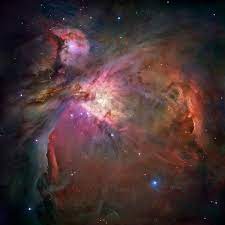Discover the mesmerizing celestial wonders that grace the Irish night sky during the enchanting season of spring.
Irish Spring
The Irish night sky in spring is a canvas adorned with celestial gems, from shimmering planets to intricate constellations. This article takes you on a journey through the top 10 celestial bodies, planets, and constellations that are best observed during this magical time of the year. As the days grow longer and the chill of winter recedes, these celestial wonders provide a captivating backdrop to the Irish night.
1. Venus: The Evening Star
Venus, the radiant Evening Star, dominates the western horizon during spring evenings.
Venus, often referred to as the “Evening Star,” graces the Irish night sky during spring, creating a breathtaking spectacle. As the second planet from the Sun, Venus is Earth’s closest neighbor and is often visible shortly after sunset or before dawn. Its brilliance and proximity make it impossible to miss as it gleams like a radiant jewel on the western horizon.
2. Jupiter and Saturn: The Gas Giants
Jupiter and Saturn form a celestial duo, displaying their majestic presence in the night sky.
Jupiter and Saturn, the largest planets in our solar system, become prominent features of the Irish night sky during spring. They appear in close proximity, forming a celestial duo that captivates observers with their immense size and striking beauty. Jupiter, with its distinct bands and swirling storms, is a wonder to behold through a telescope, while Saturn’s iconic ring system leaves a lasting impression on all who gaze upon it.
3. Mars: The Red Planet
Mars, the Red Planet, stands out with its fiery hue and distinctive appearance.
Mars, often referred to as the “Red Planet,” graces the Irish night sky during spring with its distinct reddish hue. As Earth’s neighboring planet, Mars has long fascinated astronomers and stargazers alike. During favorable oppositions, Mars can be observed in exquisite detail, revealing surface features like polar ice caps and intricate Martian landscapes.
4. The Orion Nebula: A Stellar Nursery
The Orion Nebula is a stellar nursery where new stars are born amidst a colorful cosmic tapestry.
The Orion Nebula, situated within the iconic constellation Orion, is a celestial masterpiece that can be observed in the Irish night sky during spring. This nebula is a stellar nursery, where new stars are born from the vast clouds of gas and dust. Through binoculars or a telescope, observers can marvel at the intricate patterns and vibrant colors of this cosmic tapestry.
5. The Pleiades: Seven Sisters
The Pleiades, also known as the Seven Sisters, shine as a tight-knit star cluster in Taurus.
The Pleiades, also known as the Seven Sisters, are a captivating star cluster nestled within the constellation Taurus. During spring, these seven bright stars, named after figures from Greek mythology, grace the Irish night sky with their sparkling beauty. They are a popular target for both naked-eye observation and binoculars.
6. Ursa Major and Ursa Minor: The Great and Little Bears
Ursa Major and Ursa Minor are two prominent constellations featuring the well-known Big and Little Dippers.
Ursa Major and Ursa Minor, two prominent constellations, are a permanent fixture in the Irish night sky throughout the year. However, during spring, they reach their zenith, making them ideal targets for stargazers. Ursa Major features the famous Big Dipper, while Ursa Minor hosts the Little Dipper, with Polaris, the North Star, at its tip.
7. Leo: The Lion of Spring
Leo, the celestial lion, prowls the night sky during the spring months.
Leo, the celestial lion, prowls the Irish night sky during spring, adding a touch of majesty to the celestial panorama. This constellation is known for its distinctive shape, resembling a crouching lion, and its bright stars, which form the asterism known as the “Sickle.” Leo is an excellent example of a zodiacal constellation, making it a must-see during this season.

8. The Beehive Cluster: M44
The Beehive Cluster, also known as M44, is a stunning open star cluster in Cancer.
The Beehive Cluster, officially designated as Messier 44 (M44), is a remarkable open star cluster located within the boundaries of the constellation Cancer. This cluster, consisting of hundreds of stars, creates a captivating sight when observed through binoculars or a telescope. Its name, “The Beehive,” aptly describes the appearance of a swarm of stars clustered together.
9. The Virgo Cluster: Galaxies Galore
The Virgo Cluster is a rich concentration of galaxies, a hidden gem for deep-sky enthusiasts.
The Virgo Cluster is a hidden gem for deep-sky enthusiasts in the Irish night sky during spring. Located within the constellation Virgo, this cluster is a vast assemblage of galaxies. Observers armed with telescopes can explore the diverse shapes and sizes of these distant galaxies, ranging from spiral to elliptical, creating a truly awe-inspiring experience.

10. Lyrid Meteor Shower: Shooting Stars in April
The Lyrid meteor shower, an annual celestial event, offers a meteoric spectacle in April.
While not a celestial body or constellation, the Lyrid meteor shower is a celestial event that graces the Irish night sky during spring, particularly in April. This meteor shower occurs when Earth passes through the debris left behind by the Comet C/1861 G1 Thatcher. Observers can witness shooting stars streaking across the sky, creating a captivating display of meteoric activity.
Irish Night Sky in Spring
The Irish night sky in spring is a celestial playground, offering a wealth of astronomical wonders to explore. From the radiant Venus to the captivating Orion Nebula and the majestic Leo, these celestial bodies, planets, and constellations provide endless opportunities for stargazers and astronomy enthusiasts to marvel at the beauty of the universe. As the nights grow warmer and the skies clearer, be sure to venture out and witness these celestial delights in all their glory.
